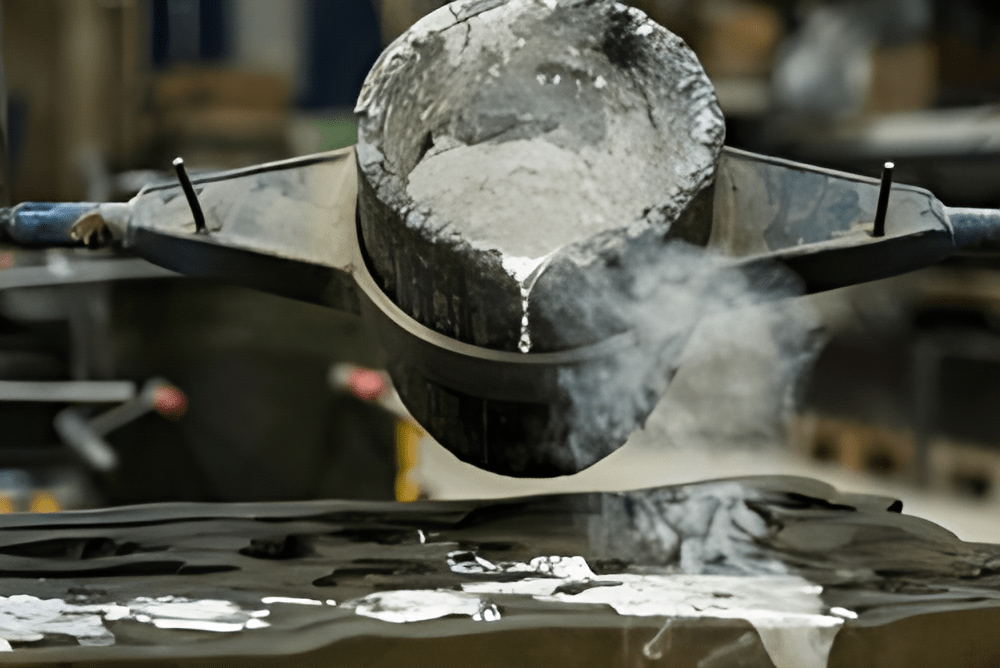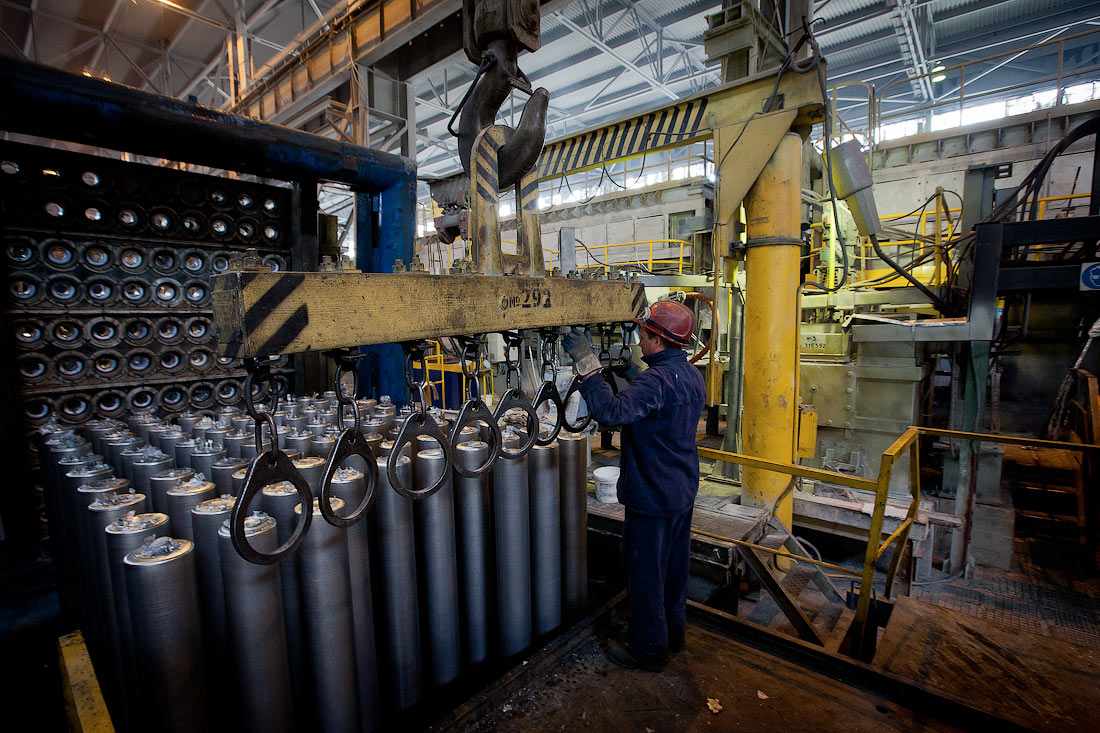Aluminum Foundry and resource conservation: Building a sustainable cycle
Wiki Article
Understanding the Value of Aluminum Foundry in the Aerospace and Automotive Industries
Aluminum foundries are essential to the aerospace and automotive industries. They provide crucial light-weight components that add to overall effectiveness and performance. The special properties of aluminum deal distinct advantages in manufacturing. As developments in technology and lasting techniques arise, the duty of these foundries is developing. Recognizing these factors elevates important concerns regarding the future of transport and development. What ramifications do these developments hold for the sectors at large?The Function of Aluminum Foundries in Manufacturing Lightweight Parts
Aluminum foundries play an essential role in the aerospace and vehicle sectors by generating lightweight parts that boost efficiency and gas efficiency. The need for lighter materials has risen as producers seek to lower overall automobile weight, bring about boosted gas economic situation and lower emissions. Aluminum's one-of-a-kind residential properties, including high strength-to-weight proportion and deterioration resistance, make it an excellent option for numerous applications.Components such as engine blocks, transmission housings, and architectural elements take advantage of aluminum's malleability and simplicity of casting, providing the required toughness while minimizing weight. Furthermore, aluminum's recyclability aligns with lasting manufacturing practices, better driving its adoption in these markets. Foundries use precise methods to assure ideal material properties, facilitating innovations in layout and modern technology. Eventually, aluminum foundries are necessary in fulfilling the developing demands of aerospace and automotive markets, adding to improvements in safety and security, effectiveness, and environmental duty.
Advanced Casting Techniques Made Use Of in Aerospace and Automotive Applications
In the aerospace and auto markets, progressed spreading methods have actually come to be important for enhancing efficiency and efficiency. Accuracy spreading methods, in addition to lightweight alloy innovations, allow the production of parts that meet stringent sector criteria. In addition, the assimilation of additive manufacturing even more changes design possibilities, permitting greater personalization and intricacy partly.Precision Casting Approaches
While markets such as aerospace and automobile progressively demand high-performance components, accuracy spreading methods have actually arised as vital techniques to meet these needs. These methods, consisting of investment spreading and pass away casting, offer remarkable dimensional precision and surface area finish, essential for parts subjected to strenuous functional conditions - Aluminum Foundry. Financial investment spreading permits complex designs and complicated geometries, making it possible for the production of lightweight yet resilient parts. Pass away spreading, on the various other hand, guarantees high volume manufacturing with consistent high quality and lowered preparations. Both approaches assist in the reliable use materials, decreasing waste and improving sustainability in manufacturing processes. As the demand for innovative services continues to grow, precision casting methods play a crucial function ahead of time the abilities of aluminum foundries within these important sectorsLightweight Alloy Advancements
As the aerospace and auto sectors goal for boosted efficiency and effectiveness, technologies in lightweight alloys have come to be significantly considerable. These alloys, which include advanced aluminum-lithium and magnesium-based compositions, provide exceptional strength-to-weight ratios, allowing makers to generate parts that are both durable and lightweight. The adoption of these products not only improves fuel effectiveness but likewise minimizes greenhouse gas exhausts, straightening with international sustainability objectives. Advanced spreading methods, such as die casting and investment casting, have actually been optimized to work with these light-weight alloys, permitting complex styles and intricate geometries. This flexibility boosts the functionality and performance of parts made use of in critical applications, from aircraft structures to automobile structures, solidifying the role of aluminum foundries in driving industry technology.Additive Manufacturing Combination
Additive manufacturing has become a transformative force in the aerospace and auto sectors, seamlessly integrating with innovative casting methods to boost manufacturing capabilities. This assimilation enables for the production of complex geometries that typical techniques struggle to accomplish, greatly enhancing style flexibility. By combining additive processes with aluminum spreading, manufacturers can maximize weight reduction while keeping architectural stability. This synergy also cultivates quick prototyping, enabling quicker versions and minimizing time-to-market for brand-new components. Furthermore, using additive manufacturing can decrease product waste, aligning with sustainability objectives in both sectors. Therefore, the cooperation between these innovative methods is paving the method for ingenious remedies and performances that redefine production in aerospace and auto applications.Benefits of Aluminum as a Product in High-Performance Components
Aluminum uses considerable benefits in high-performance parts as a result of its lightweight structure, which adds to improved gas efficiency and boosted performance in both aerospace and automobile applications. In addition, its rust resistance residential properties guarantee long life and toughness, making it a perfect selection for parts subjected to severe environments - Aluminum Foundry. These benefits position aluminum as a leading product in the manufacturing of innovative high-performance componentsLightweight Framework Advantages
When considering materials for high-performance components in aerospace and auto sectors, the lightweight framework of aluminum uses substantial benefits. Its reduced density permits the development of components that decrease total lorry weight, boosting fuel efficiency and performance. This decrease in weight adds to reduce exhausts and improved operational expenses, making aluminum an eco-friendly option. Furthermore, lighter structures enable much better handling and acceleration, crucial consider competitive racing and progressed airplane layout. The capacity to design detailed shapes without endangering stamina better enhances aluminum's charm, enabling suppliers to introduce while meeting stringent safety criteria. In general, the lightweight nature of aluminum sustains the sector's shift in the direction of much more reliable and high-performing lorries.Corrosion Resistance Characteristics
The exceptional corrosion resistance of aluminum makes it an excellent selection for high-performance parts in both aerospace and automotive markets. This building is important, as components are typically revealed to extreme environmental problems, including wetness, salt, and extreme temperatures. Aluminum's all-natural oxide layer functions as a safety obstacle, preventing the underlying metal from corroding, thereby prolonging the lifespan of important components. On top of that, aluminum alloys can be customized to improve deterioration resistance, enabling particular applications sought after atmospheres. This durability minimizes upkeep expenses and enhances safety and security, making aluminum a favored product for parts such as engine components, frameworks, and architectural elements. Eventually, the corrosion resistance of aluminum contributes greatly to the general reliability and efficiency of cars and aircraft.Technologies Driven by Aluminum Foundries
As markets significantly focus on lightweight materials for boosted efficiency, innovations driven by aluminum foundries have become a critical pressure in both aerospace and vehicle sectors. These foundries go to the forefront of establishing innovative aluminum alloys and casting strategies, which boost mechanical residential properties and minimize overall weight. Enhanced die-casting approaches, such as high-pressure die spreading and capture spreading, make it possible for the production of detailed forms with superior surface area coatings, resolving complicated engineering needs.Furthermore, the integration of automation and robotics in aluminum foundries has streamlined production processes, enhancing effectiveness and reducing lead times. The adoption of additive production strategies, consisting of 3D printing with aluminum materials, has also opened new methods for rapid prototyping and personalization. These technologies not just contribute to the performance and durability of parts but likewise enhance the layout versatility for suppliers, enabling more innovative and reliable automobile styles in both aerospace and vehicle applications.
Ecological Benefits of Utilizing Aluminum in Production
Lots of materials are made use of in production, aluminum stands out for its substantial ecological advantages, especially in the aerospace and automobile sectors. Its light-weight nature adds to Aluminum Foundry improved fuel performance in automobiles and airplane, resulting in decreased greenhouse gas exhausts. Additionally, aluminum is highly recyclable; about 75% of all aluminum ever created is still being used today. This recyclability minimizes power usage, as reusing aluminum requires only 5% of the energy needed for main production.Moreover, aluminum's long life expectancy and resistance to corrosion reduce the need for constant replacements, consequently reducing waste generation. The use of aluminum in making not just sustains lasting techniques but also aligns with the growing global focus on reducing carbon impacts. As industries venture for greener services, including aluminum is a critical choice that cultivates ecological responsibility while meeting the strenuous needs of aerospace and automotive applications.

Quality Assurance and Testing in Aluminum Foundries
Reliable quality assurance and rigorous screening are important in aluminum foundries to assure the production of high-performance parts for aerospace and vehicle applications. These procedures begin with the careful selection of basic materials, guaranteeing they meet particular chemical and physical residential properties. Foundries implement rigid tracking systems throughout the manufacturing procedure, including temperature control and mold and mildew honesty checks, to stop defects.Evaluating techniques, such as spectrometry and mechanical testing, validate that the aluminum alloys possess the needed stamina, ductility, and fatigue resistance. Non-destructive screening methods, like ultrasonic and X-ray examinations, are employed to identify inner imperfections without damaging the parts.

Future Patterns in Aluminum Foundry Technology for Transportation Industries
Progressively, improvements in aluminum factory modern technology are forming the future of the transport industries, particularly in aerospace and automobile industries. Technologies in automated spreading procedures are boosting performance and accuracy, lowering production times while minimizing waste. Methods such as 3D printing and additive manufacturing are gaining traction, permitting the creation of intricate geometries that enhance weight and performance.Additionally, the assimilation of wise modern technologies and information analytics is helping with real-time surveillance of factory procedures, improving quality assurance and consistency. As sustainability becomes a concern, recycling initiatives are anticipated to grow, permitting the reuse of aluminum scrap, which is both economical and environmentally friendly.
Lastly, the advancement of advanced alloys will certainly allow producers to create lighter, stronger elements, directly adding to boosted fuel effectiveness in cars. In general, these trends are established to revolutionize aluminum foundry practices, equaling the developing requirements of the transportation sectors.
Often Asked Concerns
Exactly How Do Aluminum Foundries Ensure Safety for Workers?
Aluminum foundries prioritize worker safety and security by executing extensive training programs, keeping proper air flow systems, using personal protective devices, carrying out regular safety and security audits, and sticking to sector guidelines, creating a safe and secure environment for all workers.What Are the Usual Defects in Aluminum Castings?
Usual defects in aluminum spreadings consist of porosity, contraction, additions, and surface area blemishes. These concerns can develop from inadequate mold style, insufficient putting methods, or contamination, eventually affecting the high quality and efficiency of the end product.How Do Aluminum Foundries Handle Recycling of Scrap Products?
Aluminum foundries efficiently take care of scrap material recycling by accumulating, sorting, and thawing down aluminum waste. This procedure minimizes ecological effect, decreases production prices, and guarantees a sustainable supply of basic materials for future spreading operations.What Certifications Should Aluminum Foundries Have?
Aluminum foundries should have qualifications such as ISO 9001 for top quality management, ISO 14001 for environmental monitoring, and specific aerospace or automotive criteria like AS9100 or IATF 16949 to guarantee conformity and top quality in production processes.Just How Does Climate Influence Aluminum Casting Processes?
Climate substantially affects aluminum spreading processes by impacting temperatures and humidity levels. High moisture can cause moisture-related problems, while severe temperatures might alter steel residential or commercial properties, inevitably influencing the top quality and consistency of the final actors items.Report this wiki page